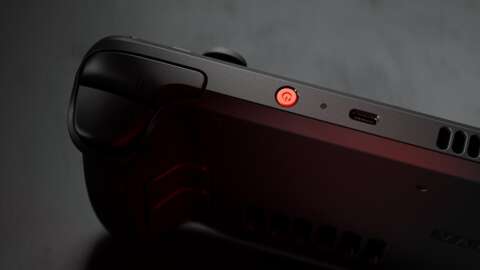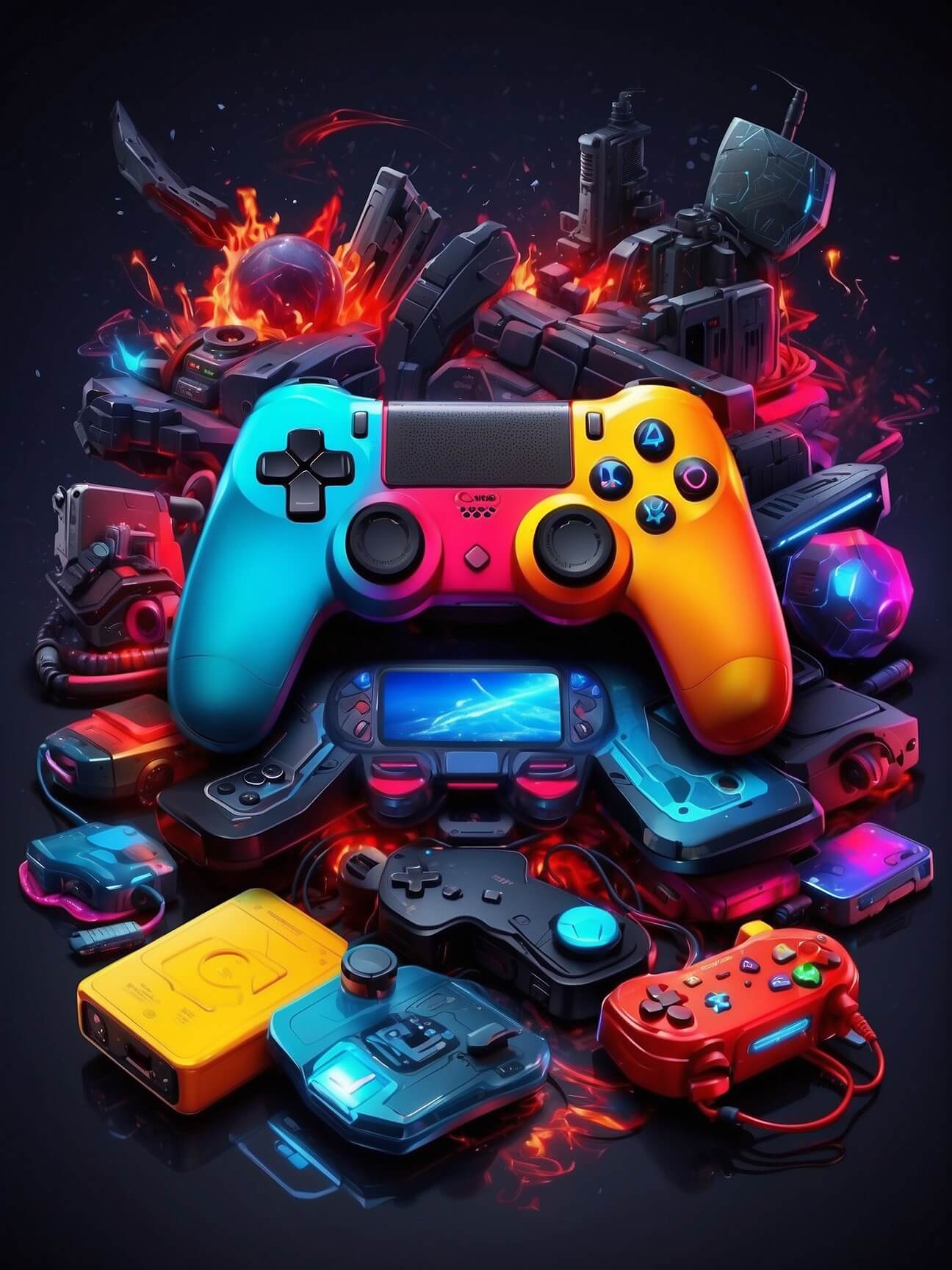Don't miss our holiday offer - 20% OFF!
The State Of PC Gaming Handhelds Shows A Bright Future

Last year, Valve irreversibly changed PC gaming with the launch of the Steam Deck. The portable PC platform was certainly not the first attempt of its kind, but with the experience of Valve’s engineering and the tight integration with Steam, it quickly became the de facto device to recommend for a powerful and reliable gaming experience on the go. The timing couldn’t have been better, too, with the Nintendo Switch only seeing an OLED upgrade the year prior and its heavily rumored specification bump reduced to another lengthy wait for a successor. As a result, the Steam Deck satiated the desire for more demanding gaming in a portable frame, so much so that we suggested it was an inflection point for the market as a whole. But it probably came as a surprise still at how quickly competitors reacted, with 2023 offering a glimpse into a future laden with compelling PC gaming handhelds, each experimenting in eye-catching ways.
With increasingly expensive components being pushed out the door by both AMD and Nvidia, it’s no surprise that the market share for PC gaming had been waning over the years. The Steam Deck might not have rectified this entirely, but it’s plain to see more positive sentiment around PC gaming since its launch, so much so that most releases nowadays include some nod to Steam Deck-specific settings and verification through Valve’s own certification program. But the simplest way to see its effect on the industry is just how quickly it’s spawned fierce competition. Asus and Lenovo have both launched their own Steam Deck competitors in 2023, competing not only in terms of performance but also, surprisingly, price, giving consumers a lot to ponder when choosing the best form for taking PC games on the go. There are other players in the game, specifically Ayaneo with its various devices, but its prices are high enough to take it mostly out of the conversation when comparing these core three. Either way, it shows a willingness for manufacturers to take a risk on an entirely new device, with the market clearly hungry for even more options to choose from.
The Asus ROG Ally was the first and has certainly cemented itself as the strongest competitor to the Steam Deck, with two variants, the ROG Ally Z1 Extreme and standard ROG Ally Z1, to choose from. Several improvements over Valve’s first effort, coupled with an aggressive price that put it just a hair more expensive, helped give consumers pause when considering which device to pick up, while also offering an option to the many regions Valve still does not service. The ROG Ally’s variable refresh rate 1080p display is an immediate draw card, offering a sharper image with better responsiveness when playing anything from Cyberpunk 2077 to Dave the Diver. Performance is enhanced too, especially on the more powerful Z1 Extreme version of the ROG Ally, although this higher power draw for higher frame rates comes at the expense of battery life in a big way. How Asus managed to produce such a compelling alternative so fast is a wonder, but its slight quality assurance issues suggest it has been a bit of a rush. Aside from a plethora of software-integration snafus that are still being sorted out to this day, the ROG Ally has manifested a hardware issue with its memory-card slot that can cause your microSD card to simply fall out during a gameplay session, which has been infuriating for affected customers. Issues like that would’ve likely killed the appetite for this device in a market without as much interest, but its strong reputation paints a different picture.
The Lenovo Legion Go is the youngest of this trio of devices (sort of–we’ll get to that soon), but shares many similarities with the Asus ROG Ally. They both use the same AMD Ryzen Extreme Z1 processor in their higher-end SKUs, both of which start at $699, while also both running Windows. The Legion Go does manage to squeeze in over 20% more battery capacity but is also the heaviest of the three by some margin. It also boasts a considerably larger display, with a native 1600p resolution and 8.8-inch panel that can feel like a bit much for the hardware it’s paired with. Where the Legion Go differs so drastically is in how you’re able to use it. It features a similar layout to the Steam Deck and ROG Ally in having the face buttons and thumbsticks on the front of the device, but borrows the idea of the left and right sides being detachable from the Nintendo Switch. The Nintendo Switch and its many ways to play have rightly become one of the console’s selling points, and the Lenovo Go seems to be hoping that this trick will be a big enough differentiating factor when it comes to decide which to purchase, especially stacked up against the ROG Ally. But again it shows a level of experimentation that hasn’t been seen in the PC space in some time, where different manufacturers are all using similar components in wildly different ways to hone in on which one might attract this new market that is hungry for the best place to play portable PC games.
While Lenovo thinks this is a battle won on the hardware-front, Valve is instead banking on the software side of things. Both the ROG Ally and Legion Go run Windows, which is great for a few reasons. All of your standard game launchers work without any fuss, you get access to Xbox Game Pass (which isn’t possible on the Steam Deck without installing Windows), and you get a standard Windows experience when hooking it up to a monitor. The downside is that Microsoft hasn’t really invested a lot into making Windows a seamless experience on these devices, even with the inclusion of touchscreens potentially taking the burden off the controller-hardware elements. It’s just much more of a pain to set up and navigate around these devices, even with bespoke software layers from Asus and Lenovo trying to do a lot of translation behind-the-scenes. It’s not impossible, and certainly nothing more challenging if you’re already accustomed to the numerous troubleshooting headaches that accompany PC gaming, but if you’re looking to pick either one up with the expectation of a console-like experience, you’ll be sorely disappointed for now.
That’s where Valve and the Steam Deck are so far ahead. Valve worked hard on integrating a custom SteamOS in an existing Linux distributable, letting the company handcraft the user-experience. Initially this showed promise but lacked support, with numerous games failing to load through Valve software translation layer that most required to run. In the year and a bit since then, things have drastically improved, to the point where it’s less of a concern which games will work and more about the few that still don’t (and in the case of some online titles, likely never will). Better still, Valve hasn’t slowed down on updates, releasing numerous improvements to SteamOS and Steam Deck firmware over the months that has drastically improved stability and even added new features for users to play around with. Last year, we lauded the Steam Deck for providing the perfect intersection between someone looking for a portable PC console and others looking to tinkers, and Valve hasn’t compromised on either approach since.
In fact, just recently, Valve released a surprise update to the Steam Deck, introducing various models (including a new 1TB version) which all sport a much-improved OLED display and thinner bezels. Valve did this while also retaining similar pricing to the original LCD-based release, and instead dropping the price of those models even further. Valve also used this chance to reconfigure some internals, improving battery life and upgrading the Wi-Fi chip inside for better compatibility with newer routers. Performance hasn’t changed much–an aspect that might be disappointing in the wake of the challenge posed by both the ROG Ally and Legion Go–but the aforementioned advantages in terms of usability and integration with Steam still make the Steam Deck a formidable opponent to go up against.
Other manufacturers will have the chance over the next few years, however. Valve has reaffirmed its commitment to the Steam Deck and the format it has popularized, stating that a proper successor is still a few years away in order for the processing power behind the Deck to meaningfully evolve. That doesn’t mean the likes of AMD are going to stop innovating on their mobile chips, inviting renewed competition from Asus, Lenovo, and whomever else decides to get involved to perhaps get ahead of Valve and put out a device so drastically more powerful that it locks out a significant portion of the market before Valve can respond. This also discounts the inevitable Nintendo Switch successor, with the company sticking to Nvidia again presumably for its next console, which is widely suspected to launch sometime in 2024. While the current Switch feels like it’s been left behind by these vastly more powerful portable PCs, its exclusive library and much lower asking price have kept it relevant, which only has space to improve when it can finally go toe-to-toe with the competition in terms of visual fidelity very soon.
Irrespective of whether you’re dedicated to Nintendo’s library or chained to your vast collection on PC (or have the privilege of enjoying both), it’s hard to imagine how the desire for these portable experiences is going to dissipate anytime soon. It’s good then that this is reflected by a willingness from numerous parties to satiate the demand, leading to an exciting hardware race that is not only providing some surprisingly experimentative and compelling gaming devices, but incredibly aggressive prices that only benefit consumers looking to purchase a great new gaming experience. Let’s all enjoy it while it lasts.

